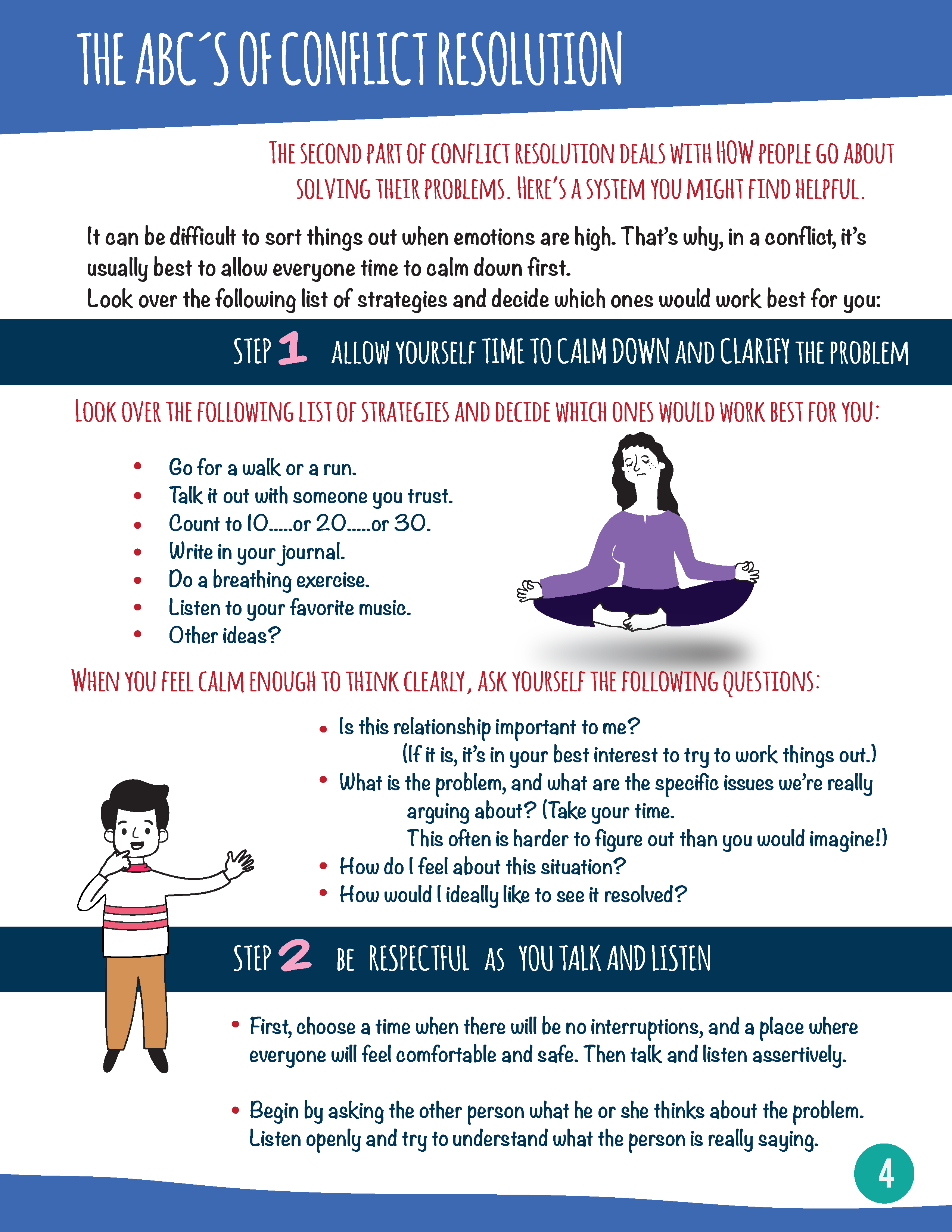
The ABC'S of Conflict Resolution.
The second part of conflict resolution, deals with how people go about solving their problems.
Here's a system you might find helpful.
It can be difficult to sort things out when emotions are high.
That's why, in a conflict, it's usually best to allow everyone time to calm down first.
Step 1, allow yourself time to calm down and clarify the problem.
Look over the following list of strategies and decide which ones would work best for you:
Go for a walk or a run.
Talk it out with someone you trust.
Count to 10, or 20, or 30.
Write in your journal.
Do a breathing exercise.
Listen to your favorite music.
Other ideas?
When you feel calm enough to think clearly, ask yourself the following questions:
Is this relationship important to me? (If it is, it's in your best interest to try to work things out).
What is the problem, and what are the specific issues we're really arguing about? (Take your time. This often is harder to figure out than you would imagine!)
How do I feel about this situation?
How would I ideally like to see it resolved?
Step 2 be respectful as you talk and listen.
First, choose a time when there will be no interruptions, and a place where everyone will feel comfortable and safe.
Then talk and listen assertively.
Begin by asking the other person what he or she thinks about the problem.
Listen openly and try to understand what the person is really saying.
Lesson Progress
- Intro to Conflict Resolution
- How People Behave in Conflict Situations
- Other Characteristics of Aggressive People
- The ABC'S of Conflict Resolution
- Other Important Tips
- Skill Building "I" Statements
- Skill Building: Reflective Listening
- More Pointers on Talking and Listening
- Listening In Conflict Situations
- Practice Skill Building “I” Statements
- Skill Building: Reflective Listening